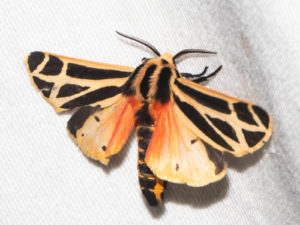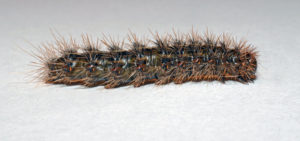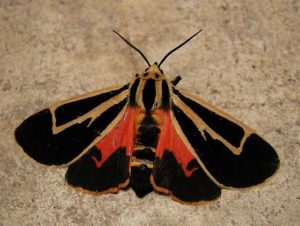Harnessed Tiger Moth (Apantesis phalerata)
The harnessed tiger moth is a member of the family of Erebidae moths. Like other tiger moths, it can be recognized from its beautiful wings marked with a striking color pattern. American entomologist Thaddeus William Harris first described the species in 1841.
Description and Identification
Pupa
The shed larval hairs contribute towards the formation of the cocoon resulting in a fuzzy pupal case.
Adult Moth
Sexual Dimorphism: Present but not prominent.
Color and Appearance: Similar to other tiger moths, the harnessed tiger moth has an exquisite showy appearance. Its abdomen is black, with its sides being red.
Forewing: When opened, the wings are black with cream-colored lines shaped into a triangle. When closed, the pattern remains the same.
Hindwing: When opened, the wings are an orangish-pink color, with prominent black patches. When closed, they are folded into the forewings, with the reddish tinge slightly visible.
In the southern states of the U.S. the coloration of the hindwings in both sexes could vary a little, with the reddish tinge replaced by a more yellowish one, and the black edging being minimal or completely absent.
Average wingspan: 30–42 mm (1.2–1.7 in)
Flight pattern: Not recorded
Season: April to September
Egg
The eggs of these moths are laid on the host plants.
Quick Facts
| Distribution | Parts of Canada, including Ontario, Quebec; and the U.S., in North America, from Maine up to Florida, west to Texas, and north to South Dakota. |
| Habitat | Gardens and open areas |
| Predators | Bats |
| Lifespan of Adults | 5-10 days |
| Host Plants | Clover, corn, dandelion, and plantains. |
| Adult Diet | Does not eat |
Scientific Classification
- Family: Erebidae
- Genus: Apantesis
- Scientific Name: Apantesis phalerata




